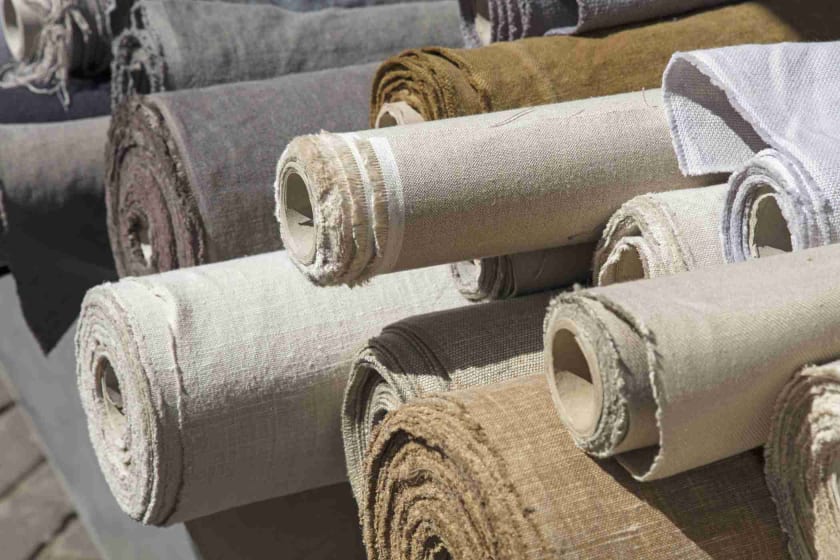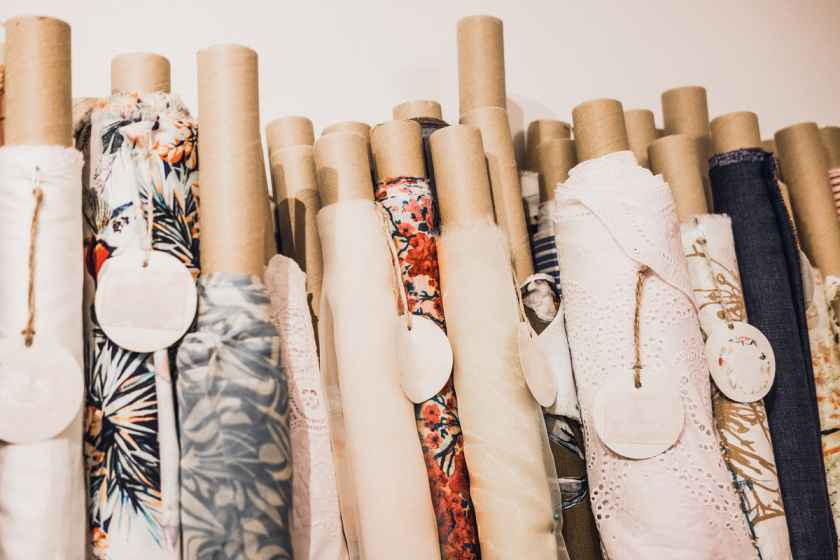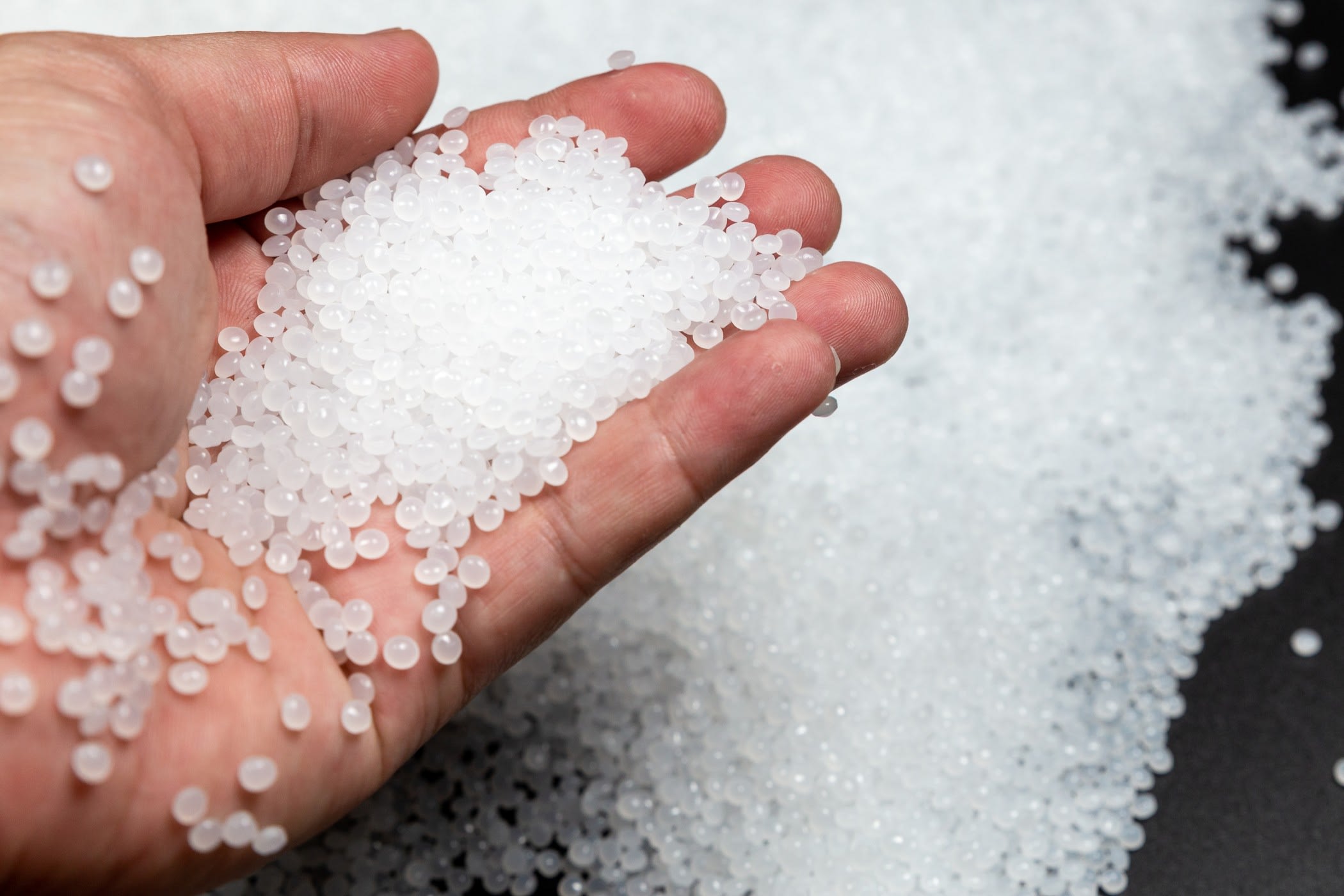Turn Deadstock Fabric into Precious Profits



Wielding the Magic Wand
Guess who holds the magic wand to enliven “deadstock fabric” that has become a bane for the trillion-dollar global fashion industry. It’s none other than the fashion merchandiser who works behind the scenes, in sync with designers, to create voguish masterpieces that become prized possessions for trendy fashion-conscious consumers.
What may seem like a cakewalk is actually a mammoth task to turn this good-for-nothing non-biodegradable garbage, deadstock fabric, to be worn on a catwalk and turn into profit for the apparel industry.
Deadstock Fabric Accounts for 10% of Global Carbon Emissions
Interestingly, deadstock fabric includes non-saleable surplus created due to over-produced yardage, slight damage or rejection, shreds and scraps from the cutting floor of factories, odds or ends fabric. These are conventionally considered useless and outdated, accounting for 10% of the global carbon emissions, and are weighing the industry down.
Recycling and reusing deadstock fabric will decrease emissions. The textile waste statistics indicate that recycling 2.62 million tons of clothing annually would be equivalent to taking off 1.3 million cars from U.S. streets.
Given the fast-evolving world environment scenario, it is pertinent to have responsible and ethical designers and merchandisers take serious note of the efficient use of deadstock fabric.
The global retail sales of garments and footwear, which reached 1.9 trillion U.S. dollars in 2019, is projected to rise to above three trillion U.S. dollars by 2030. This shows how critical the handling of fabric waste is to this industry and the world at large.
So, to top it all, it is said that the fashion and textile industry is one of the most wasteful industries in the world. Deadstock fabric that finds its way to a landfill releases toxic substances into the environment because synthetic textiles are not biodegradable, and natural fibres may take hundreds of years to decompose.
On the one hand, the fashion merchandisers reach out to Fashinza and get the consumers attracted to the brand. So, they need to deftly entwine their analytical expertise with management and marketing prowess to increase profits while keeping the green schedule in mind.
Think Tanks On The Job!

A world of rethinking is happening on the approach to sustainable fashion, and eco-driven brands that take care of the deadstock are also educating all key players of this hugely personalised consumer-centric business.
Manufacturers can gather deadstock fabric, give it a new shape, integrate reuse, and find places to sell the products, increasing sales for the industry while keeping the environment in mind.
Planning goes to the extent of cities or companies specifically organising “clothes collection bins” where people could dump unused clothes that are later sorted and recycled.
Specialised companies may fill in the gap between those who produce surplus fabric waste that may not be enough for industrial fabric recyclers. Here, glue, paper, staples, and labels are removed and scrap sorted according to the quality of the fibre. While whole-wool and whole-cotton can be disintegrated and converted back into fibres to be woven, those having lycra and spandex have no option but to reach the landfill.
For those making a fresh start in the industry, deadstock fabric may be a great option as the fabric is already available to self-funded designers who may buy a few yards and save immensely on the capital investment. Several designers may use deadstock fabric to run exclusive designs as “limited runs”.
Inspiration can be drawn from one sector of the Indian textile industry that saved deadstock fabric from reaching the landfill and turned into a huge export market.
“Chindi” shows The Way!
In rural India, this waste, a byproduct of the fabric industry or end-of-life residue in households, is called the “Chindi” or “cheap”. These have been entwined or beautifully sewn for generations together to produce some of the most beautiful and utilitarian rugs, tapestry, carpets, wall hangings, and mini domestic projects. From the cutting floors of fabric factories, they get transformed into floor coverings.
This once-upon-a-time small industry has grown so much that exports of this “rag-rug” from India have dwarfed its domestic market. Thousands of beautiful fabric shreds are used to produce soft yet durable “rag rugs” used as yoga and normal mats and as a tapestry in homes. All kinds of fabric, even synthetic, can be used in these rag rugs. This takes care of much synthetic deadstock fabric from the western world getting used in these rugs, saving them from reaching any landfill.
The Indian government has provided an enormous impetus to this export-oriented weaving activity for a long time. It removed the controls on the import quantities of fabric trims to be used in the rag rugs and included it in its list of items with preferential import duties and taxes.
At one juncture in the recent past, when measured in weight, a maximum of 57.6% of this “Chindi waste” found its way to the Indian weaving industry from Germany, followed by the United States of America, accounting for 22.1%. Fascinating is that even in this scenario, the US remained the single largest driver and consumer of these finished goods in vibrant colours.
Taking a cue, domestic reuse of synthetic trims started in several parts of the U.S., creating a variety in what was imported from India. Innovations in the U.S. have also led to the introduction of various other items using these “Chindi” materials in cushion covers and pillows.
Fascinating is that even in the western world, Chindi or rag-rugs do have an afterlife, so to say. This is based on the fact that the Navajo native Americans of the southwest strongly believe that Chindi, an evil spirit, leaves the dying person’s body with their last breath.
Let The Ideas Show The Way!

Creativity, they say, knows no bounds. Many have taken old vintage clothing since the ever-growing number of individual designers and organisations want to join the green brigade. They have begun re-sewing them into modern silhouettes.
Others may use small scrap sheddings as moving blankets, padding for carpets, linings in furniture, insulation, wipes for machinery and vehicles, and stuffing in punching bags.
Another great way to recycle deadstock fabric is upcycling, which is gaining popularity in the fashion world. The cornerstone of this methodology is the use of old, worn-out material to transform into new clothing. Since they get a fresh lease of life, they are referred to as “repurposed clothing”, too.
Several upcycled clothing brands do not break down the clothing but use it to create new garments. Since this involves minimal raw materials, lesser water, and chemicals, it should be highly eco-friendly.
A Long, Long Way To Go!
“The woods are lovely, dark, and deep,
But I have promises to keep,
And miles to go before I sleep,
And miles to go before I sleep”.
This beautiful poetry of Robert Browning aptly describes the plight of the global fashion industry. It is but an arduous journey for its stakeholders to reach their targets of putting into practice waste-free production and design procedures to establish greenhouse gas emissions goals aligned with the Paris Agreement. They have to strive hard to commit to the “Fashion Industry Charter for Climate Action” to achieve net-zero emissions by 2050.
All these stakeholders, right from business owners to merchandisers, designers, and entrepreneurs, may reach out to Fashinza to fulfil the requirements of sourcing clothes in line with this great vision.



















